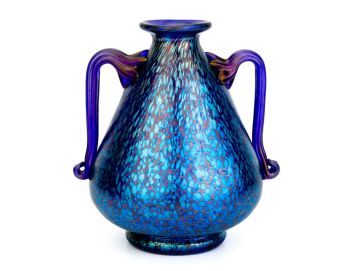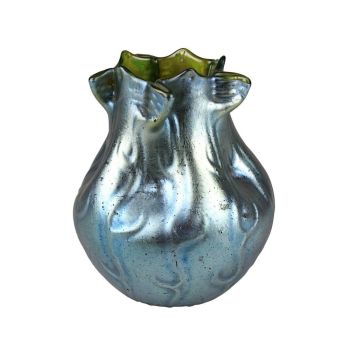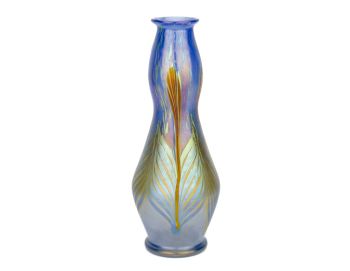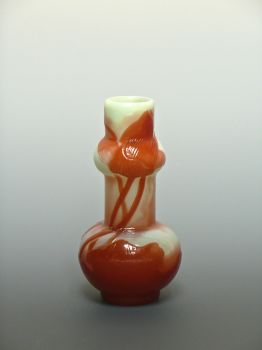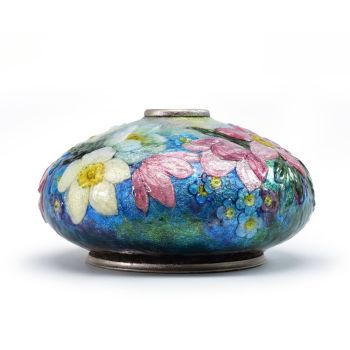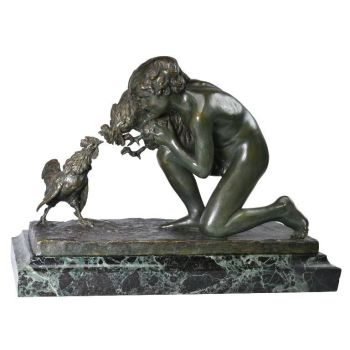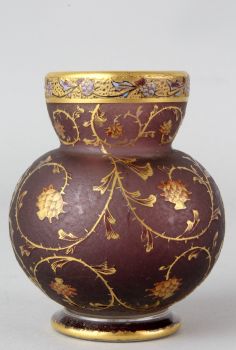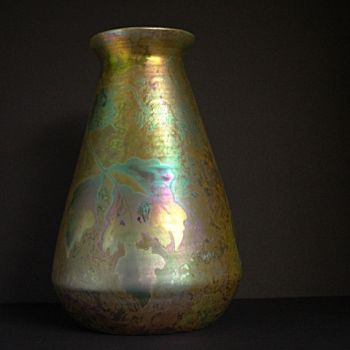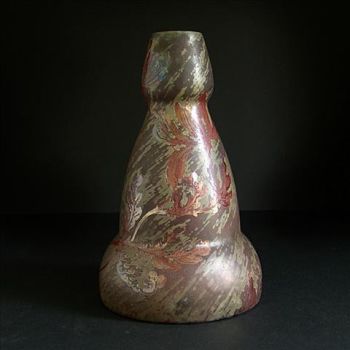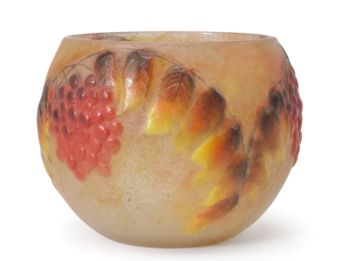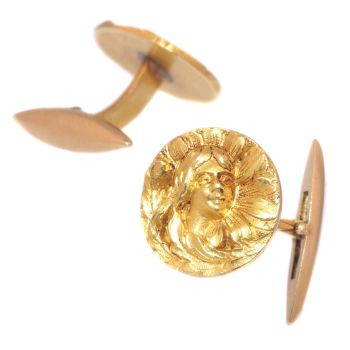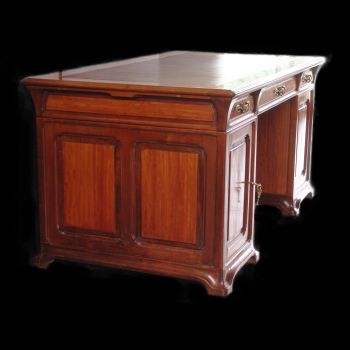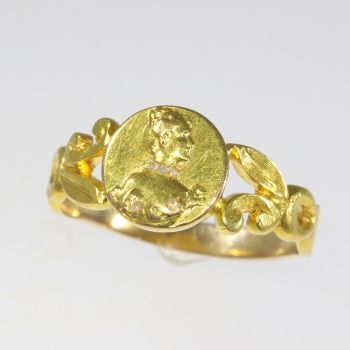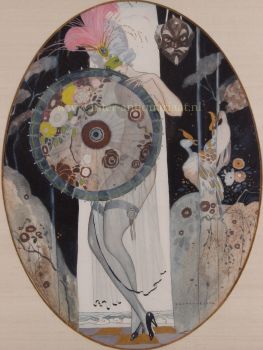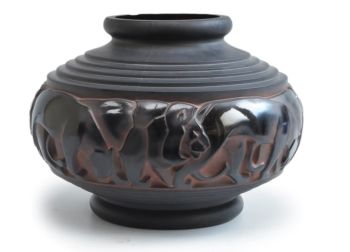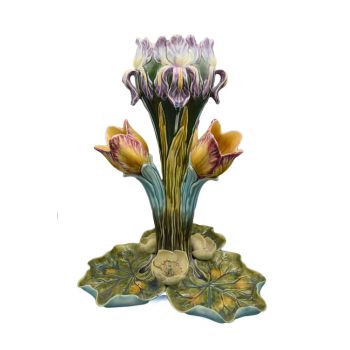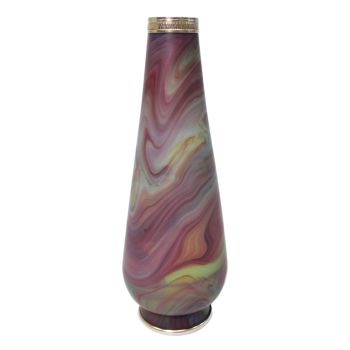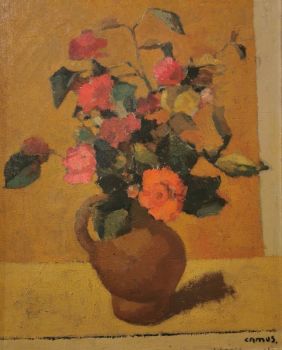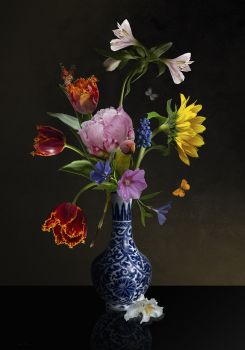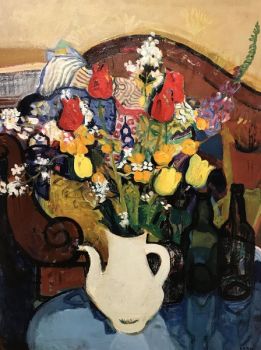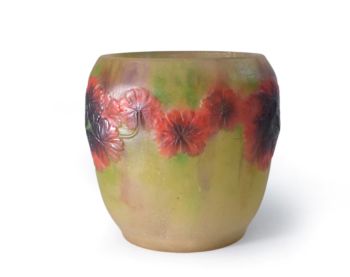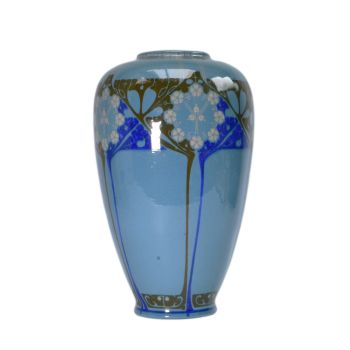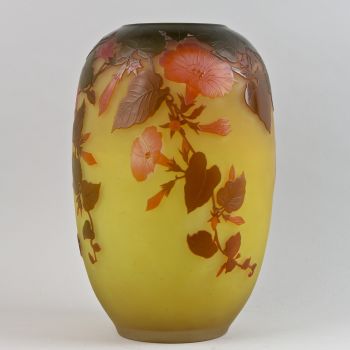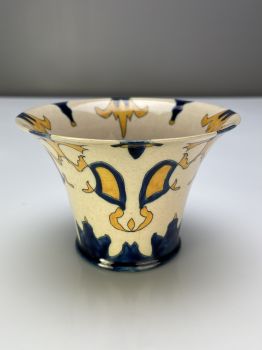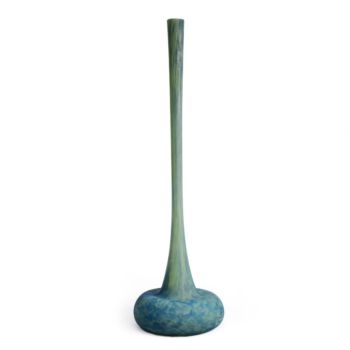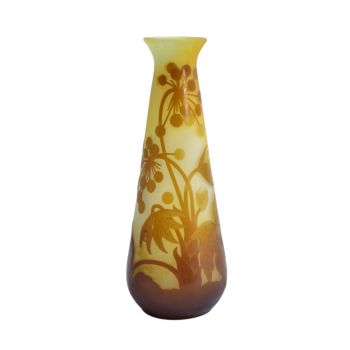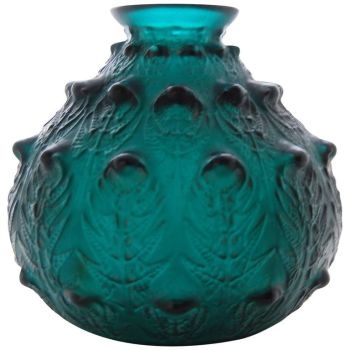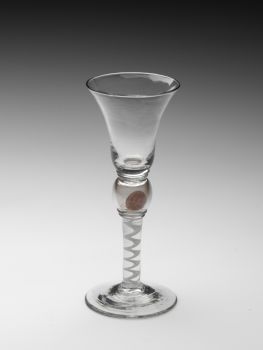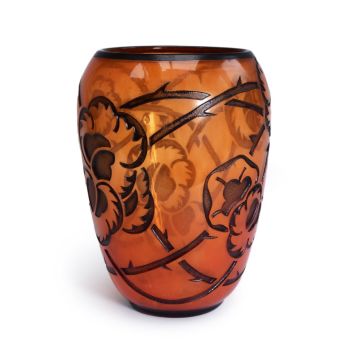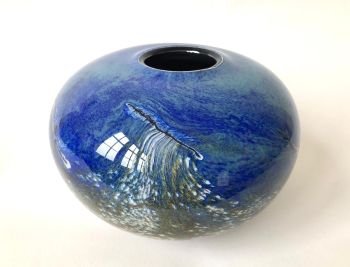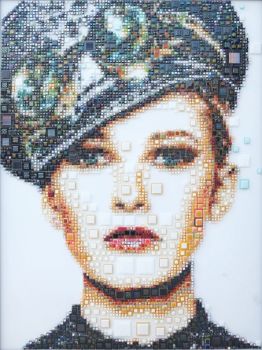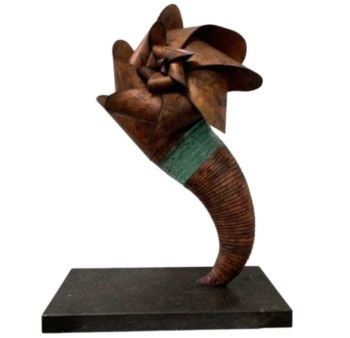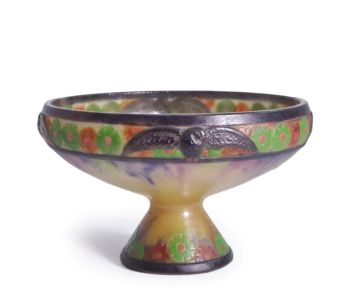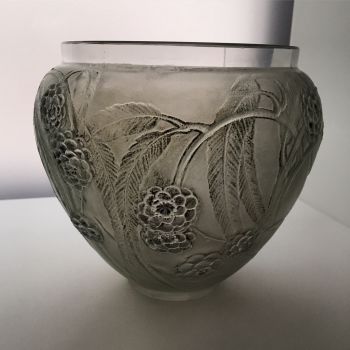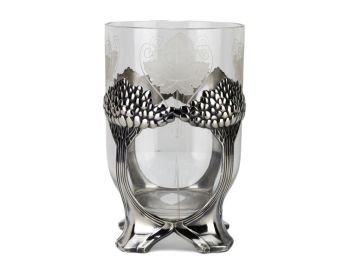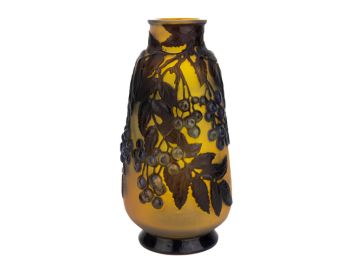Johann Loetz Witwe – Boudon & Klähr, Paris, 1900 – Ruby Papillon – Art Nouveau mount 1900 - 1909
Johann Loetz (Lötz) Witwe Klostermühle
Vidrio
17 ⨯ 13 cm
ConditionMint
Precio a consultar
Antiques Emporium
- Sobre la obra de arteThis vase is our second mounted vase from Boudon & Klähr in Paris. This vase or bowl was created in the heyday of Art Nouveau around 1900 – 1905 through a collaboration between Johann Loetz Witwe from Austrian Bohemia and Boudon & Klähr from Paris. This creation is a perfect marriage of Austrian Jugendstil and French Art Nouveau.
The vase was blown by Johann Loetz Witwe in a ground color of ruby red glass and is executed in the decor “Papillon”. This decor made its appearance in the year 1898 and is one of the most famous, successful and probably also one of the most applied decors by Johann Loetz Witwe. Papillon is characterized by iridescent dots that change color depending on which ground color the vase is blown (Crete, Candia, Cobalt or Ruby).
Boudon & Klähr which was based in Paris represented Johann Loetz Witwe’s glass in the French capital. This vase that was sold exclusively by Boudon & Klähr, therefore, is an excellent representation of Austrian Art Nouveau glass combined with a pewter mount in French Art Nouveau design.
The literature indicates that the glass for this vase was commission-ordered from Johann Loetz Witwe by Boudon & Klähr; it is unknown by which firm the pewter frame was applied to the commission-ordered vases. In some cases Gustav Gurschner is attributed as the designer, although no incontrovertible evidence for this has been found.
Dimensions:
Height: 175mm / 6.89”
Diameter top: 130mm / 5.12″
Width mount: 265mm / 10.43″
Literature:
Prestel – Böhmisch Glas 1880 – 1940 Band 1 Werkmonographie. Page 98 & 99. - Sobre el artista
La cristalería Loetz existió en Klostermuhle, Austria, durante poco más de cien años, a partir de 1840. Pero su apogeo fue durante la vida de Max Ritter Von Spaun, nieto del Johann Loetz original que había fundado la empresa.
Von Spaun se hizo cargo de la empresa en 1879 y la dirigió hasta 1908, un año antes de su muerte. Fue asistido por Eduard Prochaska, su especialista técnico, y juntos inventaron, diseñaron y produjeron toda una serie de maravillosos nuevos tipos de vidrio, obteniendo varias patentes y ganando premios en todas las principales exposiciones mundiales durante la década de 1890 y los primeros años de el nuevo siglo.
La empresa Loetz se encontraba entre los líderes en diseño Art Nouveau y especialmente en vidrio artístico iridiscente. El vidrio "Papillon", como el jarrón de la izquierda, a veces se conoce hoy como vidrio "mancha de aceite". Otro colorante favorito de Loetz fue el vidrio irridizado con senderos tirados llamado vidrio "Fenómeno".
Había jarrones irridizados con cintas de colores metálicos que serpenteaban sobre la superficie, y muchos diseños espectaculares con estelas aplicadas de hermosos colores, o simplemente sacadas del cuerpo del vidrio para formar asas o decoración.
Alrededor de 1900, la compañía comenzó a colaborar con diseñadores externos, y algunos grandes artistas diseñaron piezas para Lotz, en particular Joseph Hofmann, Koloman Moser, Maria Kirchner y Hofstatter.
En 1908 Loetz fue adquirido por el hijo de Max Von Spaun, también llamado Max, y aunque luchó financieramente (pasando por la quiebra en 1911 y nuevamente en 1931) hubo varios grandes diseñadores cuyo trabajo fue producido por Loetz durante esos años y a través del arte. período de deco. Estos incluyeron a Adolf Beckert y Michael Powolny.
¿Está interesado en comprar esta obra de arte?
Artwork details
Related artworks
Johann Loetz (Lötz) Witwe Klostermühle
Johann Loetz Witwe – Jugendstil Cobalt Papillon vaas1900 - 1910
Price on requestAntiques Emporium
Johann Loetz (Lötz) Witwe Klostermühle
Johann Loetz Witwe - Phänomen Genre 7773 – Orange1900 - 1910
Price on requestAntiques Emporium
1 - 4 / 7René Lalique
An early vase 'Bluets' designed by Rene Lalique (1860-1945)1910 - 1920
Price on requestLennart Booij Fine Art and Rare Items
Johann Loetz (Lötz) Witwe Klostermühle
Johann Loetz Witwe – Jugendstil Cobalt Papillon vaas1900 - 1910
Price on requestAntiques Emporium
1 - 4 / 24Frères Daum
Daum Nancy – “Paysage Soleil Couchant” vase with two applied handles1900 - 1910
Price on requestAntiques Emporium
Johann Loetz (Lötz) Witwe Klostermühle
Johann Loetz Witwe - Phänomen Genre 7773 – Orange1900 - 1910
Price on requestAntiques Emporium
Gabriel Argy-Rousseau
Gabriël Argy-Rousseau – Crabes et Algues vase – 19201920 - 1929
Price on requestAntiques Emporium
1 - 4 / 24Unknown artist
François-Théodore Legras – Tall “Fleurs de Pommier” apple blossoms vase1900 - 1909
Price on requestAntiques Emporium
1 - 4 / 24René Lalique
A very rare deep green ‘Fougeres’ Vase designed by R. Lalique1912
€ 8.950Lennart Booij Fine Art and Rare Items
 Curated by
Curated bySilla Scheepens
1 - 4 / 24Gabriel Argy-Rousseau
Gabriël Argy-Rousseau – Crabes et Algues vase – 19201920 - 1929
Price on requestAntiques Emporium
Frères Daum
Daum Nancy – “Paysage Soleil Couchant” vase with two applied handles1900 - 1910
Price on requestAntiques Emporium
Amalric Walter
Amalric Walter & Henri Bergé – Crabe plumier1920 - 1929
Price on requestAntiques Emporium
1 - 4 / 12














